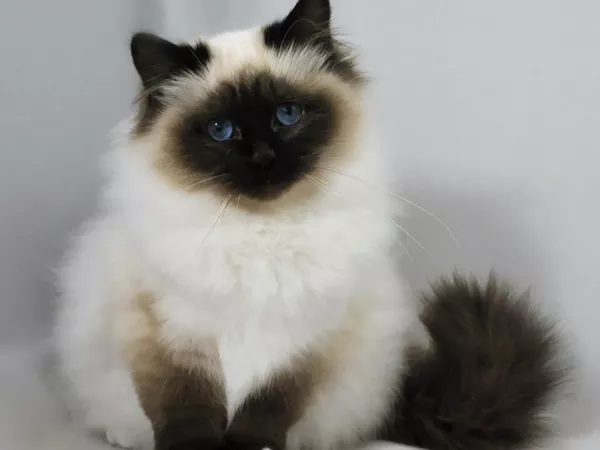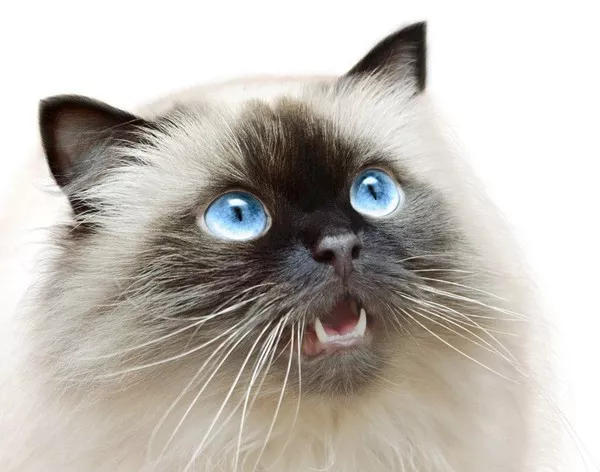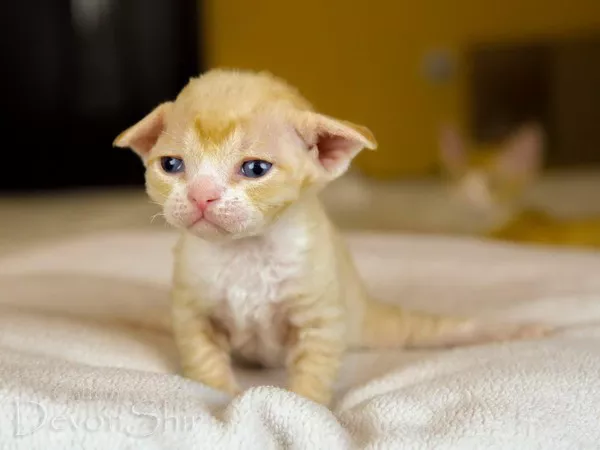Cats, with their enigmatic personalities and diverse breeds, have captured the hearts of millions of pet enthusiasts around the world. One breed that stands out for its striking appearance and captivating personality is the Himalayan cat. Renowned for its luxurious coat, blue almond-shaped eyes, and a charming face, the Himalayan cat has garnered a dedicated fan base. However, the question of whether Himalayan cats are noisy often arises, contributing to the various myths and perceptions surrounding this feline breed. In this in-depth exploration, we delve into the vocal tendencies of Himalayan cats, dispelling myths, understanding the factors influencing vocalizations, and providing insights for cat enthusiasts who are curious about the charming serenades of the Himalayan.
The Feline Symphony: Decoding Cat Vocalizations
1. Feline Communication: An Intricate Language
Cats communicate through a rich repertoire of vocalizations, body language, and scent marking. While each cat has its unique way of expressing itself, vocalizations play a significant role in feline communication. From meows and purrs to chirps and yowls, cats use their voices to convey a wide range of emotions, needs, and expressions.
2. Types of Cat Vocalizations: A Melodious Palette
Cat vocalizations can be broadly categorized into several types, each serving a distinct purpose:
Meows: Meows are versatile and can convey various messages. Cats may meow to greet their owners, express hunger, seek attention, or communicate discomfort.
Purrs: Purring is often associated with contentment, but cats may also purr when they are in pain or distress.
Chirps and Chirrups: These short, high-pitched sounds are typically used by cats to communicate with their owners or express excitement.
Yowls: Yowling is a louder and more intense vocalization often associated with mating behaviors or territorial disputes.
Hissing and Growling: Hissing and growling are defensive vocalizations used when a cat feels threatened or frightened.
3. Breed Variations: Individual Vocal Profiles
Different cat breeds may exhibit varying vocal tendencies. Some breeds are known for their chattiness, while others may be more reserved. Understanding the breed-specific vocal profile is essential for cat owners to appreciate and respond to their feline companions effectively.
Debunking the Myth: Are Himalayan Cats Noisy?
1. The Myth of Noisiness: Dispelling Misconceptions
One common misconception about Himalayan cats is that they are exceptionally noisy. This belief may stem from the influence of their parent breeds—the Persian and the Siamese—each known for distinct vocal characteristics. However, it’s crucial to approach this myth with an open mind and an understanding that individual Himalayan cats may exhibit a range of vocal tendencies.
2. Breed Influences: Persian and Siamese Traits
To explore the vocal tendencies of Himalayan cats, it’s helpful to consider the traits inherited from their parent breeds. Persians, characterized by their calm and gentle demeanor, may be less vocal compared to breeds known for chattiness. On the other hand, the Siamese breed is renowned for its vocal and communicative nature. The Himalayan, being a crossbreed, can inherit traits from both parent breeds, resulting in a diverse range of vocal expressions.
Factors Influencing Himalayan Cat Vocalizations
1. Individual Personality: The Cat’s Voice
One of the most significant factors influencing a Himalayan cat’s vocalizations is its individual personality. Each cat is unique, and some Himalayans may be naturally more talkative than others. Factors such as temperament, confidence, and sociability play a crucial role in shaping a cat’s vocal tendencies.
2. Social Interaction: Seeking Attention
Himalayan cats, known for their affectionate nature, may use vocalizations as a means of seeking attention and expressing their desire for interaction. Cats that enjoy being around their owners may meow or chirp to initiate communication or request companionship.
3. Environmental Stimuli: Responding to the Surroundings
Cats, including Himalayans, are highly attuned to their environments. Changes in the surroundings, the presence of other animals, or even unfamiliar sounds can trigger vocalizations. Some Himalayans may vocalize more in response to external stimuli, expressing curiosity or alerting their owners to perceived changes.
4. Routine and Habit: Establishing Communication Patterns
Cats are creatures of habit, and routine plays a significant role in their lives. Himalayan cats may develop specific vocalizations as part of their routine, such as meowing during feeding times or expressing excitement when their owners return home. These habitual vocalizations become ingrained as a form of communication.
Recognizing Common Himalayan Cat Vocalizations
1. Gentle Meows: Expressing Needs
Himalayan cats may use soft and gentle meows to communicate their needs. Whether it’s a request for food, attention, or a desire to be let into a room, these subtle meows are often expressions of their desire for interaction.
2. Chirps and Chirrups: Conversations with Owners
Chirps and chirrups are charming vocalizations that Himalayan cats may use to communicate with their owners. These playful sounds often accompany interactions, such as when the cat is excited to see its owner or engaging in interactive play.
3. Purring: Contentment and Comfort
Purring is a versatile vocalization that Himalayan cats, like many other breeds, use to express contentment, relaxation, and comfort. While purring is often associated with positive emotions, cats may also purr when they are unwell or in pain.
4. Yowls: Expressing Discomfort or Distress
While yowling is not as commonly associated with Himalayan cats, some individuals may exhibit this more intense vocalization. Yowls can be expressions of discomfort, distress, or a response to external stimuli. Understanding the context of the yowling helps discern the cat’s needs.
Tips for Understanding and Responding to Vocalizations
1. Observation and Context: Decoding the Message
Observation is a key aspect of understanding a Himalayan cat’s vocalizations. Pay attention to the context in which the vocalizations occur. Whether it’s mealtime, playtime, or a reaction to environmental changes, understanding the context helps decode the messages conveyed by the cat.
2. Responsive Interaction: Meeting Needs
Responding to a Himalayan cat’s vocalizations with positive interaction strengthens the bond between the cat and its owner. If the cat meows for attention, engaging in play or providing affectionate interaction reinforces the cat’s communication efforts.
3. Veterinary Check-Ups: Addressing Health Concerns
Excessive vocalizations or changes in a cat’s vocal patterns may warrant a visit to the veterinarian. Cats may vocalize more if they are unwell or experiencing discomfort. Regular check-ups help address any health concerns and ensure the well-being of the Himalayan cat.
4. Enriching the Environment: Providing Stimuli
Enriching the cat’s environment with toys, scratching posts, and interactive activities can help channel their energy and reduce excessive vocalizations that may stem from boredom or a lack of stimulation.
Conclusion
The myth of Himalayan cats being exceptionally noisy is debunked through a nuanced understanding of feline behavior and individual variations within the breed. While Himalayan cats, like all felines, engage in vocalizations as a means of communication, the extent and frequency of their vocal tendencies vary widely. Understanding the factors influencing vocalizations, recognizing common Himalayan cat sounds, and responding with attentive care contribute to a harmonious relationship between cat and owner.
As cat enthusiasts embark on the delightful journey of companionship with Himalayan cats, appreciating their unique vocal expressions becomes an integral part of fostering a deep and meaningful connection. Whether the Himalayan cat serenades with gentle meows, playful chirps, or contented purring, each vocalization becomes a melodic note in the symphony of feline communication, enhancing the joy and companionship these regal cats bring to their human counterparts.

























